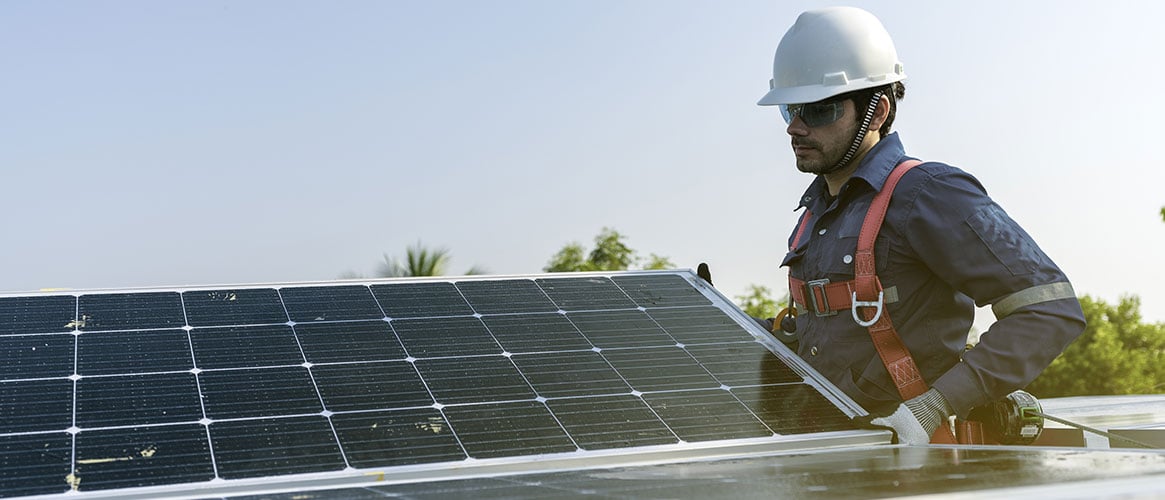A solar panel installer suffered serious injuries after falling from the roof of an Oakland home. The worker lost his footing and fell 15 feet to a concrete driveway. Fortunately, he survived—but this injury might have been prevented. Neither the injured worker nor the two other installers on the roof were wearing fall protection. The others could have suffered serious injuries as well, or worse, had they lost their footing.
Installing solar panels is dangerous work. Not only do your employees face the same fall risks as other rooftop workers, they also face additional fall risks specific to their line of work.
What your employees need to know about fall risks when installing solar panels
Trip/fall hazards increase with solar panel installation. Each time a worker installs a solar panel on a roof, less walking space becomes available. Skylights and hatches pose trip hazards for your employees. And, if a skylight is unguarded, a worker could fall right through it.
To mitigate these risks, Cal/OSHA requires fall protection for those working at elevations of seven-and-a-half feet or higher. Fall protection comes in the form of guardrails, safety nets, and personal fall arrest systems like a harness. If guardrails or safety nets aren’t available, the personal fall arrest system is mandatory. It’s also mandatory any time unguarded skylights are present, regardless of other fall protection methods in use.
What your employees need to do to prevent falls when installing solar panels
Before any work begins, inspect the fall protection equipment. Are there any rips or tears in the harness? Is the guardrail or safety net secure? Are skylights guarded?
Next, survey the rooftop to see if skylights, hatches, or any other rooftop openings are present. Also look for tools and power cords as these also cause trip hazards. Cover or guard any floor holes immediately.
Use cranes, conveyors, or hoisting equipment to bring solar panels up onto the roof. Never carry the panels up a ladder manually. Workers could lose balance and fall off the ladder, taking the solar panel to the ground with them.
What to cover at your safety meeting about fall risks while installing solar panels
Since each rooftop is different, companies should have a site-specific safety plan in place. They should also conduct a safety meeting prior to beginning any new job. Review and discuss with your employees the specific challenges of the roof, such as the type of roof material they’ll be walking on and how steep it is. And, discuss your chosen method of fall protection and ensure everyone knows how it works.
Other things to cover include:
- Locating any skylights, roof hatches, vents, or other openings on the roof, and addressing the potential fall risks.
- How to safely navigate the different trip hazards on the roof.
- How to use the equipment that lifts the panels onto the roof.
- Daily inspection of fall arrest harnesses.
- Daily inspections of other fall protection (safety nets, guardrails).
Solar panel installation is more in demand today with the growing popularity of green energy.
Make sure your employees are aware of all hazards on the roof where they work and take steps to avoid them. Remind workers to always wear fall protection and inspect it daily.

